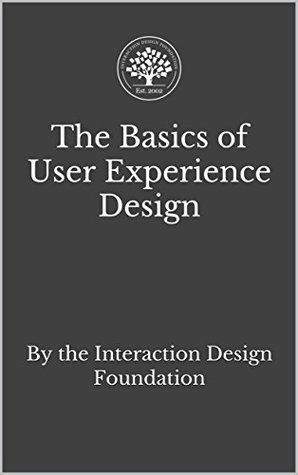More on this book
Kindle Notes & Highlights
Read between
April 1 - August 5, 2020
The sheer number of topics covered in UX design is mind-boggling: there’s interaction design (the psychology of motion and feedback), design thinking (an iterative, empathy-based problem-solving process), and usability (how easily a product can be used), just to name a few.
User experience design, as its name suggests, is about designing the ideal experience of using a service or product.
You can add all the features and functionality that you like to a site or application, but the success of the project rides on a single factor: how the users feel about it.
Does the site or application give the user value?
A UX designer is someone who investigates and analyzes how users feel about the products he or she offers them. UX designers then apply this knowledge to product development in order to ensure that the user has the best possible experience with a product.
Design thinking is an iterative process in which we seek to understand the user, challenge assumptions, and redefine problems in an attempt to identify alternative strategies and solutions that might not be instantly apparent with our initial level of understanding. At the same time, design thinking provides a solution-based approach to solving problems.
Empathize – with your users Define – your users’ needs, their problem, and your insights Ideate – by challenging assumptions and creating ideas for innovative solutions Prototype – to start creating solutions Test – solutions
Each spoke of a solution which fitted within his or her respective level of expertise.
the most obvious solutions are the ones hardest to come by because of the self-imposed constraints we work within.
many years of education and practical experience can hinder rather than help in dealing with a problem.
Design thinking is often referred to as ‘outside the box’ thinking, as designers are attempting to develop new ways of thinking that do not abide by the dominant or more common problem-solving methods.
Design Thinking is an Iterative and Non-linear Process
Design thinking is essentially a problem-solving approach specific to design, which involves assessing known aspects of a problem and identifying the more ambiguous or peripheral factors that contribute to the conditions of a problem.
Useful Usable Findable Credible Desirable Accessible Valuable
Don’t neglect accessibility in the user experience; it’s not just about showing courtesy and decency—it’s about heeding common sense, too!
“We tend to be distracted by the voices in our own heads telling us what the design should look like.” — Michael Bierut, Partner at Pentagram Design
offers 5 criteria that a product must meet so as to be usable: Effectiveness Efficiency Engagement Error Tolerance Ease of Learning
error tolerance, according to Whitney Quesenberry, requires: Restricting opportunities to do the wrong thing. Make links/buttons clear and distinct; keep language clear and simple;
The best way to support ease of learning is to design systems that match a user’s existing mental models. A mental model is simply a representation of something in the real world and how it is done from the user’s perspective. It’s why virtual buttons look a lot like real buttons – we know that we push buttons;
When you’re designing for usability, thinking about utility is important, too. While usability is concerned with making functions easy and pleasant to use, utility is about providing functions that users need in the first place.
Typical topics covered within user interviews include: Background (such as ethnographic data) The use of technology in general The use of the product The user’s main objectives and motivations
Don’t forget that scripts are a guide, not a bible. If you find something interesting takes place in an interview and there are no questions, on the script, to explore that idea… explore it anyway.
1. Card Sorting Card sorting was originally a technique used in psychological research long before ‘UX research’ was a thing. It’s a simple concept: you write words or phrases on cards; then you ask the user to categorize them. You might also ask the user to label the categories.
Card sorting, an approach that UX research inherited from psychological research, is an excellent, and wonderfully simple, way of assessing what users’ priorities are and how their sense of order processes the existing nature of an item in question.
4. Field Studies This is actually a number of techniques under a broad heading. It’s all about going out and observing users ‘in the wild’ so that we can measure behavior in the context where users actually use a product. Field studies include ethnographic research, interviews, observations, and contextual enquiry.
5. Usability Testing A firm favorite that has a long and prestigious history in UX research, usability testing is the observation of users trying to carry out tasks with a product. Such testing can focus on a single process, or be much wider in range.
7. User Personas User personas are a fictional representation of the ideal user. They focus on the goals of the user, that individual’s characteristics and the attitudes he/she displays. They also examine what the user expects from the product.
recap, the techniques are: Card sorting Expert review Eye movement tracking Field studies Usability testing Remote usability testing User personas
1D: Words Words—especially those used in interactions, such as button labels—should be meaningful and simple to understand.


